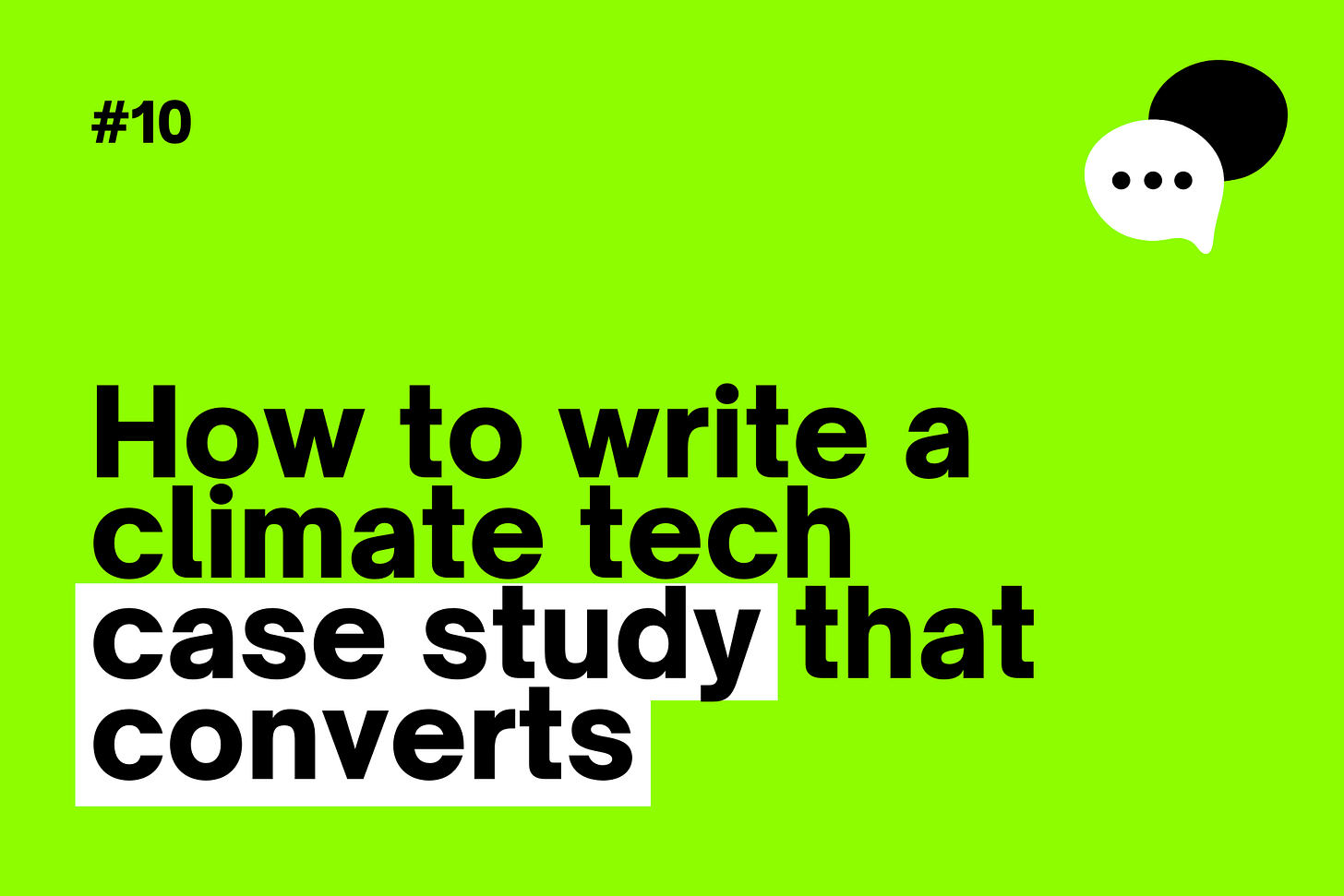How to write a climate tech case study that converts
Case studies are a secret weapon for climate tech marketers. Here's how to get them right.
Hello friends,
Case studies are one of the most under-utilized content opportunities in climate tech today.
They’re the perfect bottom-of-funnel resource for capturing relevant and engaged leads.
And in a nascent industry where building trust is critical, case studies offer powerful social proof and reassure potential customers that your product is a bet worth taking.
But few climate tech companies are doing them *really* well.
Here, we explore how to make your customer stories as valuable as possible to future customers.
1 — Gate it (partially).
Many companies don’t even think about gating their case studies. Big mistake! Gated studies can help you capture highly relevant, bottom-of-funnel leads, fleshing out your gated content library across all stages of the funnel.
We highly recommend turning case studies into beautifully designed, multimedia-style PDFs that add value beyond just talking about your product (see point 2). However, just because you’re gating a case study doesn’t mean it’s completely hidden (see point 3).
2 — Don’t make it all about your product.
One of the biggest pitfalls we see in case studies is the way they gloss over the actual transformation process and present the story as simply some version of “client used product and now client is happy.”
Of course, that’s your narrative structure: but in order to make your case study a valuable resource for potential customers with similar problems, your case study needs to go into a useful level of detail.
Analyze and lay out the steps your customer took, beyond simply using your product. Some of their ‘transformation’ may have been adjacent to your product, and that’s okay. Case studies are useful to potential clients only when it helps them understand what happens in the ‘messy middle’ part of the journey.
3 — Use your case study everywhere.
Don’t think of case studies as one-off stories hidden behind a form, but rather as resources that you can continually reference in all your other content and marketing efforts. Start building up a customer story database that you can always refer to when making content. Working in real-life stories will also help your other content to resonate better.
Some ideas:
Create social media content + graphics
Record Zoom snippets
Advertise it on multiple pages of your website
Pull testimonials for home and product pages
Work summary versions into other content you create; always be referring back to the social proof your case study provides you
Build a dedicated ‘case study’ section of your website
4 — Give it an engaging title.
The title of your case study is incredibly important. Spend an unreasonable amount of time on it.
Think about:
Promising a ‘before and after’ style transformation
Referencing specific, common, and universal problems (rather than vague statements like ‘made progress’ or ‘achieved success’ or ‘used our product’)
Using specific timeframes (‘in 6 months’)
Not making your product the focus of your title (you can do this, but it can sometimes be better not to)
Some examples:
How X Company Achieved CSRD Compliance in 9 Months with X Framework
How X Company’s 3-Person Sustainability Team Budgets for Carbon Removals
How X Company Achieved 80% Scope 3 Decarbonization in 12 Months
5 — Bring the receipts.
Case studies that only leverage the written word will most likely be skimmed. Instead, we recommend a multimedia approach that combines elements — data, screenshots, images, Zoom video recordings, you name it — to bring the transformation to life.
These elements have the benefit of breaking up the text, but also makes the story you’re telling seem truly real.
Any progress turned visual can help bring your case study to life. People love to visualize transformations — it’s why before/after pictures of weight loss or fitness transformations or home renovations tend to do so well on social media.
Think about:
Including screenshots or data (from within your product or from them) that compare starting points vs. now
Asking customers for images (maybe someone snapped a photo of an early strategy session on a whiteboard, or recorded a site visit)
Recording snippets of your conversation on Zoom to complement what you’ve written (“here’s the CSO talking about how the company determined their climate commitments…”
Takeaways
The best case studies combine an inspiring before/after framing with specific, replicable, not-necessarily-product-related steps to flesh out the meat and potatoes of the customer’s journey.
Promise big, and then deliver.
There’s so much potential for case studies in climate tech — and we hope to see more brands leveraging the power of the customer story in their content and messaging.



